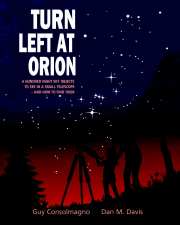Book contents
- Frontmatter
- Contents
- How Do You Get to Albireo?
- How to Use This Book
- The Moon
- The Planets
- Seasonal Objects: Winter
- Seasonal Objects: Spring
- Seasonal Objects: Summer
- Seasonal Objects: Autumn
- Southern Hemisphere Objects
- How to Run a Telescope
- Where Do You Go From Here?
- Glossary
- Tables
- Index
- Acknowledgments
The Planets
Published online by Cambridge University Press: 30 October 2009
- Frontmatter
- Contents
- How Do You Get to Albireo?
- How to Use This Book
- The Moon
- The Planets
- Seasonal Objects: Winter
- Seasonal Objects: Spring
- Seasonal Objects: Summer
- Seasonal Objects: Autumn
- Southern Hemisphere Objects
- How to Run a Telescope
- Where Do You Go From Here?
- Glossary
- Tables
- Index
- Acknowledgments
Summary
The planets can be among the most exciting things to see with a small telescope; they can also be among the most disappointing. The excitement is natural: these are other worlds we're seeing, places we've heard about all our lives, places that have the familiarity of an old friend even the first time we find them in our telescope. But that's the key to the potential disappointment. We already know in our imaginations what we think they should look like. We've seen the photographs that spacecraft have been sending to us since the early 1960s. Somehow, the little dot of light in our telescope isn't quite the same.
The first thing to be aware of is that planets are bright but small. This means that they tend to be very easy to find, once you know where to look, but rather disappointing at first to look at. Because they're bright, they can stand the highest power magnification that the sky conditions and your telescope will allow. Because they're small, you'll want all that magnification. Be patient; wait for calm nights (often those with thin high clouds) and for those special fleeting moment of steadiest seeing.
(Uranus and Neptune are faint and small! They're tiny greenish disks of light; that's why “planetary nebulae”, which look much the same, got that name. Pluto is exceedingly faint, only fourteenth magnitude, and it is utterly undistinctive.
- Type
- Chapter
- Information
- Turn Left at OrionA Hundred Night Sky Objects to See in a Small Telescope - and How to Find Them, pp. 26 - 37Publisher: Cambridge University PressPrint publication year: 2000



